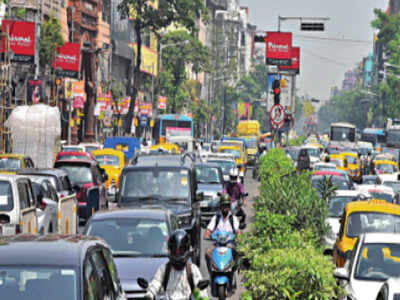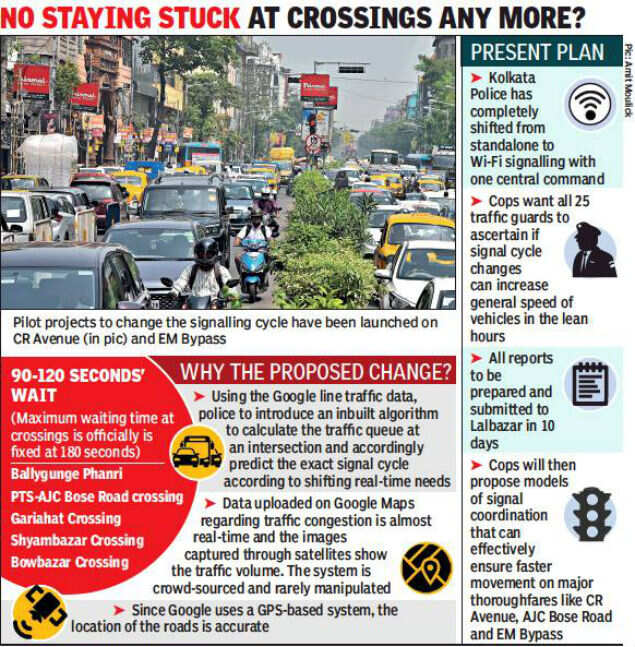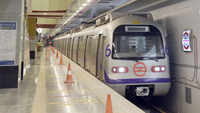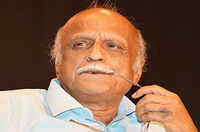
KOLKATA: The city traffic police has embarked on a 10-day study in order to change signal cycles during lean hours across Kolkata. The order came from the top brass during the traffic review meeting, which was attended by commissioner Anuj Sharma. The police said that all 25 traffic guards will be carrying out the review, especially in the lean traffic hours at night and certain times on the weekends.
Pilot projects in this regard have been launched on CR Avenue and EM Bypass and both the MG Road-CR Avenue crossing and the Ruby crossing will soon become test cases for police who plan to change the signal timings post 10pm at both points.

“The idea is to ensure that major thoroughfares in the city are not unnecessarily clogged with long signal cycles which increase travelling time. At night, we receive complaints from commuters of being forced to wait at crossings even when there is lean traffic. While the traffic guards were allowed to fix their own signal cycles during school hours, we want them to cohesively explain the rationale behind changing the particular signal cycle at an important crossing. Based on their feedback, Lalbazar will come up with a comprehensive plan,” said a senior officer.
At least two traffic guards that TOI spoke to, one in north Kolkata and the other in south suburban Kolkata, said their senior officers have been instructed to be present at the traffic guards night before preparing this report.
Cops said they are also ushering in a new, but popular, technique to ensure commuters don’t fret at major traffic intersections in the city. Using Google line traffic data, the police will introduce an inbuilt algorithm that can calculate the traffic queue at an intersection and can accordingly predict the exact signal cycle according to shifting real-time needs.
According to sources, Kolkata Police has completely shifted from standalone signals — where calibrations were cumbersome and linking the signals into a system was difficult due to varying clock timings at the individual crossings — to a Wi-Fi system with technical help from Siemens.
“There are three ways to set the traffic signal cycle now. One is on a real-time basis, another on an hour-to-hour basis and the third according to traffic flow. Doing this, we faced certain difficulties. We had difficulty in asserting the queue length of the vehicles. We could have used underground induction-loop sensors to count the number of vehicles, but unwanted digging could have affected the system. This is why, we zeroed in on using Google Maps,” explained an officer.
Once the traffic officers on the roads are informed about the changed signal systems, sources claimed, the primary aim would be to ensure there are no hurdles between one signal and another. If any stretch is found to be in need of a long-term solution, the top brass will intervene.
Pilot projects in this regard have been launched on CR Avenue and EM Bypass and both the MG Road-CR Avenue crossing and the Ruby crossing will soon become test cases for police who plan to change the signal timings post 10pm at both points.

“The idea is to ensure that major thoroughfares in the city are not unnecessarily clogged with long signal cycles which increase travelling time. At night, we receive complaints from commuters of being forced to wait at crossings even when there is lean traffic. While the traffic guards were allowed to fix their own signal cycles during school hours, we want them to cohesively explain the rationale behind changing the particular signal cycle at an important crossing. Based on their feedback, Lalbazar will come up with a comprehensive plan,” said a senior officer.
At least two traffic guards that TOI spoke to, one in north Kolkata and the other in south suburban Kolkata, said their senior officers have been instructed to be present at the traffic guards night before preparing this report.
Cops said they are also ushering in a new, but popular, technique to ensure commuters don’t fret at major traffic intersections in the city. Using Google line traffic data, the police will introduce an inbuilt algorithm that can calculate the traffic queue at an intersection and can accordingly predict the exact signal cycle according to shifting real-time needs.
According to sources, Kolkata Police has completely shifted from standalone signals — where calibrations were cumbersome and linking the signals into a system was difficult due to varying clock timings at the individual crossings — to a Wi-Fi system with technical help from Siemens.
“There are three ways to set the traffic signal cycle now. One is on a real-time basis, another on an hour-to-hour basis and the third according to traffic flow. Doing this, we faced certain difficulties. We had difficulty in asserting the queue length of the vehicles. We could have used underground induction-loop sensors to count the number of vehicles, but unwanted digging could have affected the system. This is why, we zeroed in on using Google Maps,” explained an officer.
Once the traffic officers on the roads are informed about the changed signal systems, sources claimed, the primary aim would be to ensure there are no hurdles between one signal and another. If any stretch is found to be in need of a long-term solution, the top brass will intervene.
Elections 2019
Trending Topics
LATEST VIDEOS
City
 Delhi: AAP govt planning to make travelling in buses, Metro free for women
Delhi: AAP govt planning to make travelling in buses, Metro free for women  Heatwave conditions peak across India, 2 dead as temperature crosses 50 in Rajasthan’s Churu
Heatwave conditions peak across India, 2 dead as temperature crosses 50 in Rajasthan’s Churu  Kalburgi murder case: Belagavi man arrested, remanded in police custody till June 7
Kalburgi murder case: Belagavi man arrested, remanded in police custody till June 7  No fuel to two-wheeler riders sans helmet in Noida and Greater Noida
No fuel to two-wheeler riders sans helmet in Noida and Greater Noida
More from TOI
Navbharat Times
Featured Today in Travel
Quick Links
Lok Sabha Election Schedule 2019Lok Sabha Election NewsDelhi Capitals teamMI team 2019Rajasthan Royals 2019RCB team 2019Maharashtra Lok Sabha ConstituenciesBJP Candidate ListBJP List 2019 TamilnaduShiv Sena List 2019AP BJP List 2019Mamata BanerjeeBJP List 2019 MaharashtraPriyanka GandhiBJP List 2019 KarnatakaAMMK Candidate List 2019BJP List 2019 WBLok Sabha Elections in Tamil NaduBSP List 2019 UPNews in TamilLok Sabha Poll 2019Satta Matka 2018PM ModiMahagathbandhanNagpur BJP Candidate ListChandrababu NaiduTamil Nadu ElectionsUrmila MatondkarNews in TeluguMadras High CourtTejashwi YadavArvind KejriwalTejasvi SuryaPawan KalyanArvind KejriwalYogi AdityanathJaya PradaSatta King 2019Srinagar encounter
Get the app





